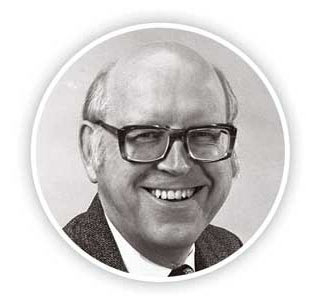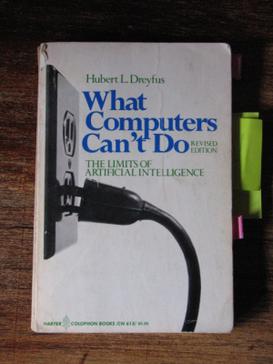Evidence against the hypothesis
Nils Nilsson has identified four main "themes" or grounds in which the physical symbol system hypothesis has been attacked. [16]
- The "erroneous claim that the [physical symbol system hypothesis] lacks symbol grounding" which is presumed to be a requirement for general intelligent action.
- The common belief that AI requires non-symbolic processing (that which can be supplied by a connectionist architecture for instance).
- The common statement that the brain is simply not a computer and that "computation as it is currently understood, does not provide an appropriate model for intelligence".
- And last of all that it is also believed in by some that the brain is essentially mindless, most of what takes place are chemical reactions and that human intelligent behaviour is analogous to the intelligent behaviour displayed for example by ant colonies.
Evidence the brain does not always use symbols
If the human brain does not use symbolic reasoning to create intelligent behavior, then the necessary side of the hypothesis is false, and human intelligence is the counter-example.
Dreyfus
Hubert Dreyfus attacked the necessary condition of the physical symbol system hypothesis, calling it "the psychological assumption" and defining it thus:
- The mind can be viewed as a device operating on bits of information according to formal rules. [17]
Dreyfus refuted this by showing that human intelligence and expertise depended primarily on unconscious instincts rather than conscious symbolic manipulation. Experts solve problems quickly by using their intuitions, rather than step-by-step trial and error searches. Dreyfus argued that these unconscious skills would never be captured in formal rules. [18]
Tversky and Kahnemann
| | This section needs expansion. You can help by adding to it. (July 2023) |
Embodied cognition
George Lakoff, Mark Turner and others have argued that our abstract skills in areas such as mathematics, ethics and philosophy depend on unconscious skills that derive from the body, and that conscious symbol manipulation is only a small part of our intelligence.[ citation needed ]
Evidence that symbolic AI can't efficiently generate intelligence for all problems
It is impossible to prove that symbolic AI will never produce general intelligence, but if we can not find an efficient way to solve particular problems with symbolic AI, this is evidence that the sufficient side of the PSSH is unlikely to be true.
Intractability
| | This section needs expansion. You can help by adding to it. (July 2023) |
Common sense knowledge, frame, qualification and ramification problems
| | This section needs expansion. You can help by adding to it. (July 2023) |
Moravec's paradox
| | This section needs expansion. You can help by adding to it. (July 2023) |
Evidence that sub-symbolic or neurosymbolic AI programs can generate intelligence
If sub-symbolic AI programs, such as deep learning, can intelligently solve problems, then this is evidence that the necessary side of the PSSH is false.
If hybrid approaches that combine symbolic AI with other approaches can efficiently solve a wider range of problems than either technique alone, this is evidence that the necessary side is true and the sufficiency side is false.
Brooks
Rodney Brooks of MIT was able to build robots that had superior ability to move and survive without the use of symbolic reasoning at all. Brooks (and others, such as Hans Moravec) discovered that our most basic skills of motion, survival, perception, balance and so on did not seem to require high-level symbols at all, that in fact, the use of high-level symbols was more complicated and less successful.
In a 1990 paper Elephants Don't Play Chess, robotics researcher Rodney Brooks took direct aim at the physical symbol system hypothesis, arguing that symbols are not always necessary since "the world is its own best model. It is always exactly up to date. It always has every detail there is to be known. The trick is to sense it appropriately and often enough." [19]
Connectionism and deep learning
In 2012 AlexNet, a deep learning network, outperformed all other programs in classifying images on ImageNet by a substantial margin. In the years since, deep learning has proved to be much more successful in many domains than symbolic AI.[ citation needed ]
Hybrid AI
| | This section needs expansion. You can help by adding to it. (July 2023) |
Symbol grounding
| | This section needs expansion. You can help by adding to it. (July 2023) |




